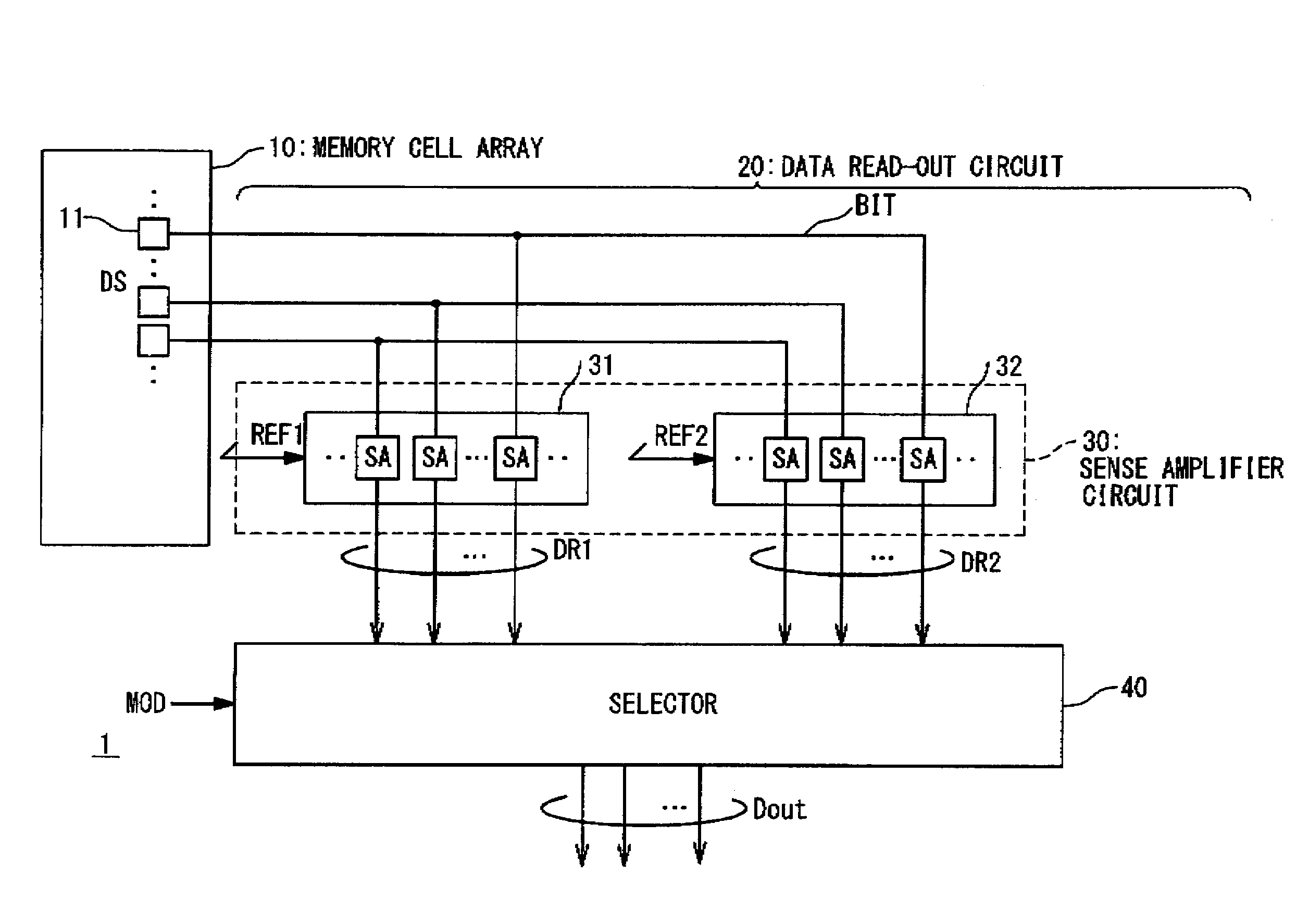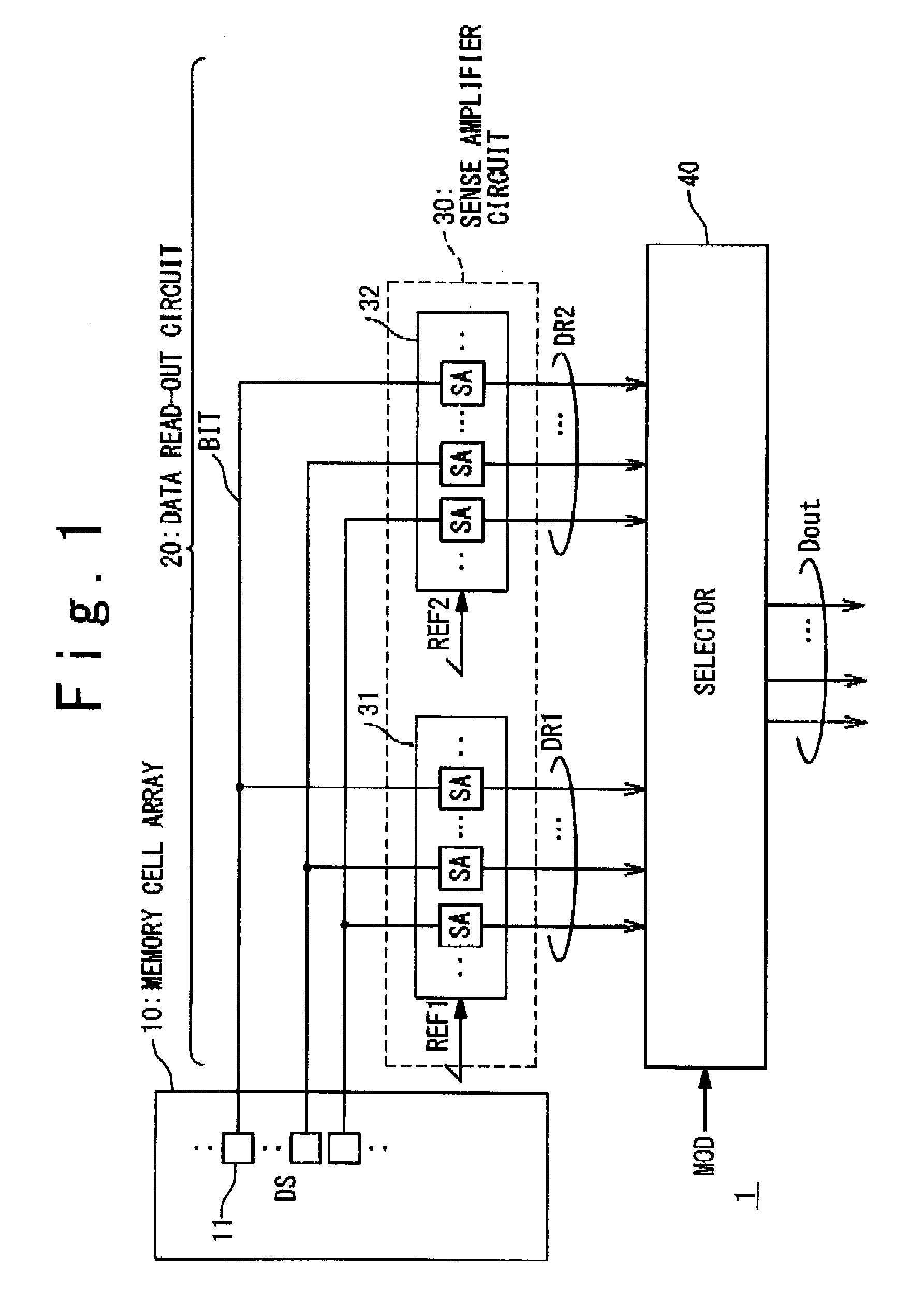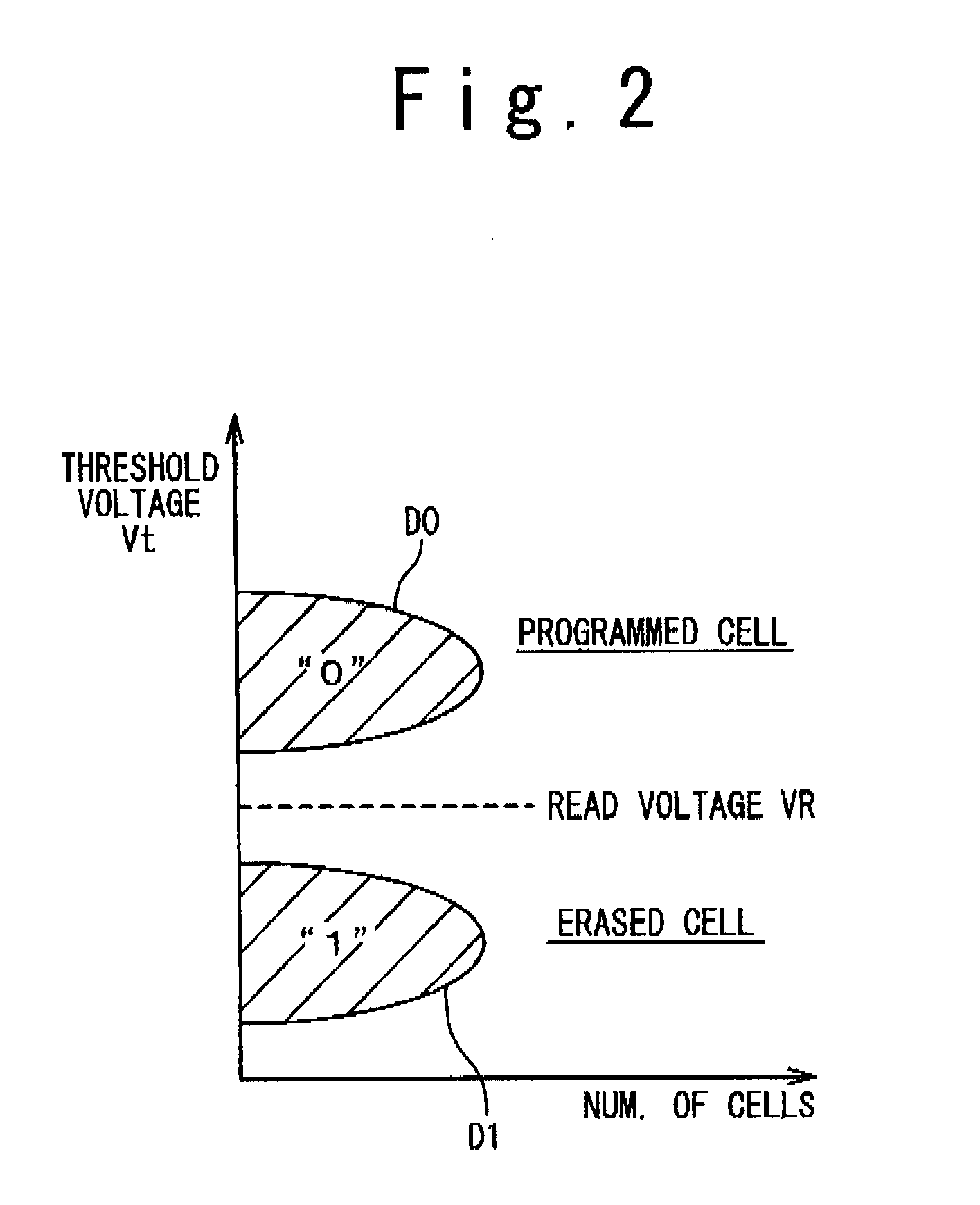Data read-out circuit in semiconductor memory device and method of data reading in semiconductor memory device
a data read-out circuit and memory device technology, applied in the direction of error detection/correction, digital storage, instruments, etc., can solve the problems of data dissipation, microcomputer malfunction, data dissipation, etc., to improve the reliability of output data, reduce the malfunction of the device provided with the semiconductor memory device, and improve the reliability of the output data output.
- Summary
- Abstract
- Description
- Claims
- Application Information
AI Technical Summary
Benefits of technology
Problems solved by technology
Method used
Image
Examples
first embodiment
1. First Embodiment
1-1. Configuration and Operation
[0035]FIG. 1 schematically shows a configuration of a semiconductor memory device 1 according to the first embodiment. The semiconductor memory device 1 is provided with a memory cell array 10 and a data read-out circuit 20. The memory cell array 10 has a plurality of memory cells 11 arranged in an array form. Data stored in the memory cells 11 of the memory cell array 10 is hereinafter referred to as “stored data DS”.
[0036]The data read-out circuit 20 reads out the stored data DS from the memory cell array 10 and outputs the read data as an output data Dout. In the present embodiment, the data read-out circuit 20 includes: a sense amplifier circuit 30 connected to the memory cell array 10; and a selector 40 connected to the sense amplifier circuit 30.
[0037]The sense amplifier circuit 30 reads out the stored data DS from the memory cell array 10 and outputs the read data to the selector 40. More specifically, the sense amplifier cir...
second embodiment
2. Second Embodiment
[0079]FIG. 8 schematically shows a configuration of a semiconductor memory device 1 according to the second embodiment. In FIG. 8, the same reference numerals are given to the same components as those described in the first embodiment, and an overlapping description will be appropriately omitted.
[0080]In the foregoing first embodiment, the sense amplifier circuit 30 has the first sense amplifier circuit 31 and the second sense amplifier circuit 32, separately, and outputs the two kinds of read data DR1 and DR2 in parallel. In the second embodiment, the sense amplifier circuit 30 sequentially outputs the two kinds of read data DR1 and DR2. More specifically, the sense amplifier circuit 30 receives the first reference level REF1 and the second reference level REF2 in turn. The sense amplifier circuit 30 generates the first read data DR1 and the second read data DR2 in turn by using the first reference level REF1 and the second reference level REF2, respectively.
[00...
third embodiment
3. Third Embodiment
3-1. Configuration and Operation
[0084]FIG. 9 schematically shows a configuration of a semiconductor memory device 1 according to the third embodiment. In FIG. 9, the same reference numerals are given to the same components as those described in the first embodiment, and an overlapping description will be appropriately omitted.
[0085]According to the present embodiment, an ECC (Error Correction Code) circuit 60 is provided between the sense amplifier circuit 30 and the selector 40. The ECC circuit 60 executes an error correction processing with respect to the first read data DR1 and the second read data DR2. The performance of the error correction is determined based on required reliability and so forth. For example, the ECC circuit 60 is configured to be capable of detecting up to two bit errors and correcting up to one bit error. An error correction code ECC is used for the error correction processing.
[0086]As shown in FIG. 9, the memory cell array 10 includes a d...
PUM
 Login to View More
Login to View More Abstract
Description
Claims
Application Information
 Login to View More
Login to View More - R&D
- Intellectual Property
- Life Sciences
- Materials
- Tech Scout
- Unparalleled Data Quality
- Higher Quality Content
- 60% Fewer Hallucinations
Browse by: Latest US Patents, China's latest patents, Technical Efficacy Thesaurus, Application Domain, Technology Topic, Popular Technical Reports.
© 2025 PatSnap. All rights reserved.Legal|Privacy policy|Modern Slavery Act Transparency Statement|Sitemap|About US| Contact US: help@patsnap.com



